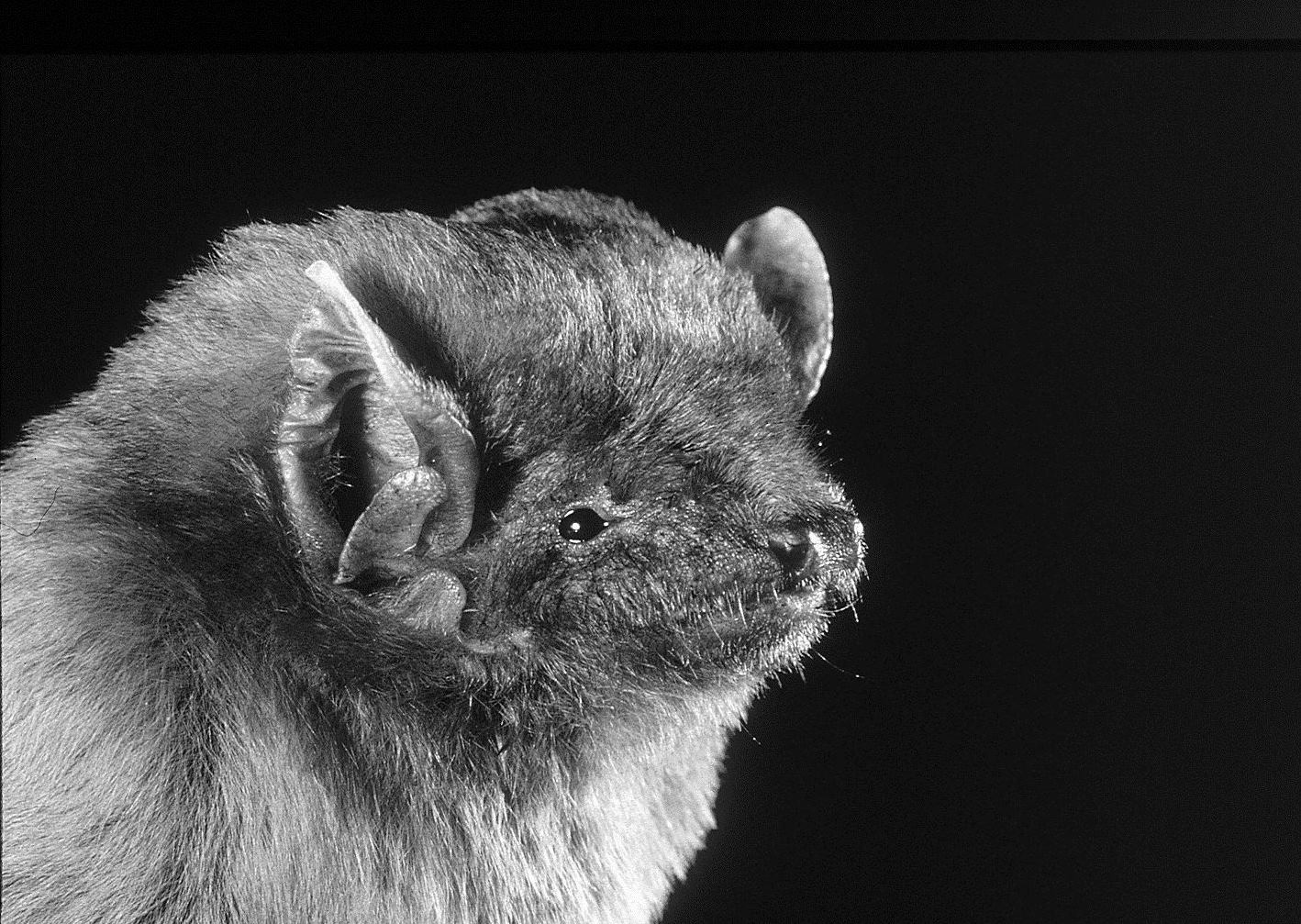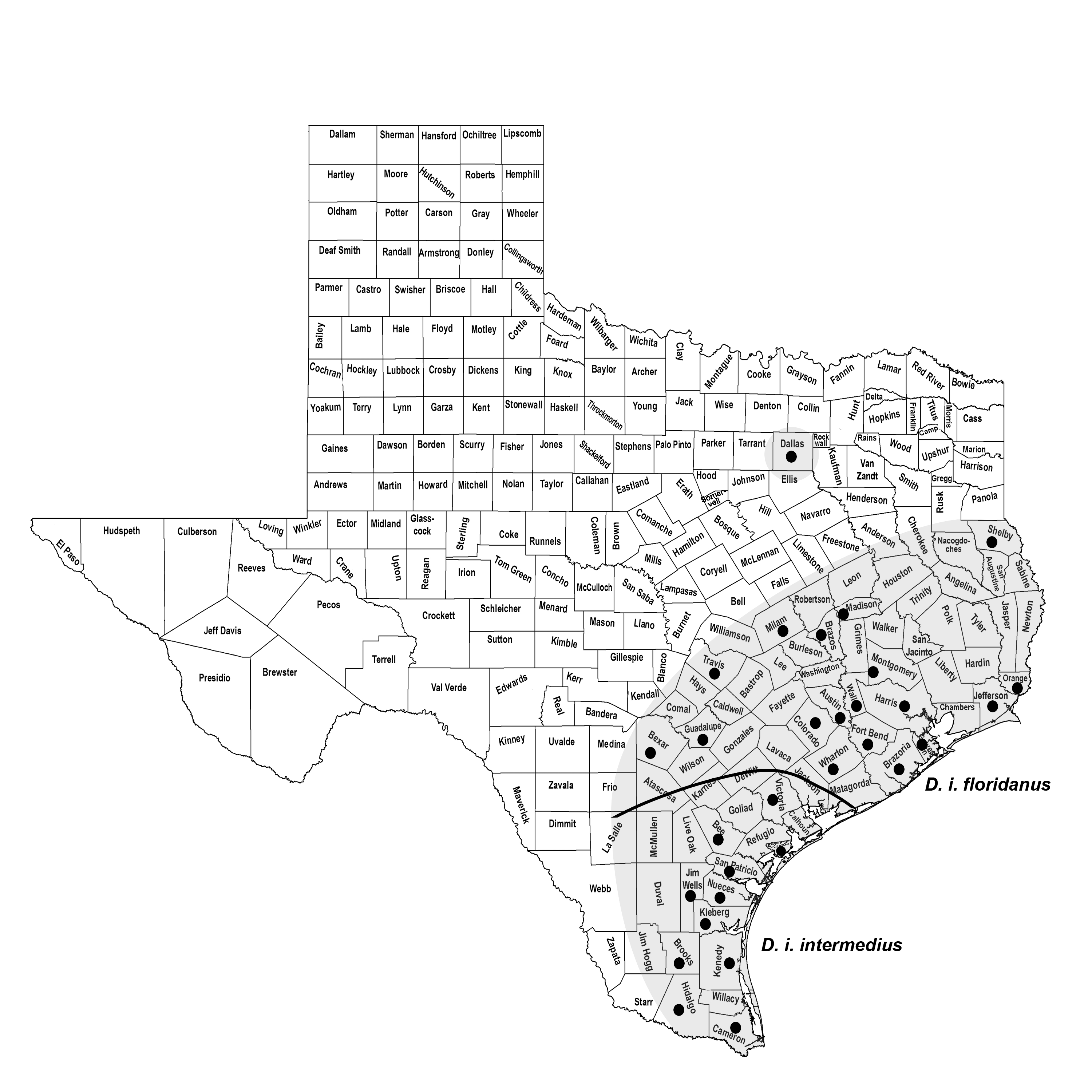NORTHERN YELLOW BAT
Dasypterus intermedius (H. Allen 1862)
Order Chiroptera : Family Vespertilionidae
DESCRIPTION. A large, yellowish-brown bat with short ears and long, silky fur; membranes brownish; membrane between hind legs well haired on basal third or half, the terminal half and underside are nearly naked. Dental formula: I 1/3, C 1/1, Pm 1/2, M 3/3 × 2 = 30. Averages for external measurements: total length, 140 mm; tail, 51 mm; foot, 11 mm; forearm, 58 mm. Weight, 14–31 g.

DISTRIBUTION. This is a southeastern bat that occurs in the eastern and southern parts of Texas from Shelby County southward to Cameron County and westward to Bexar and Uvalde counties. A recent Texas Department of State Health Services report from Dallas County extends the known range of the species to the north.

SUBSPECIES. There are two subspecies in Texas, D. i. intermedius from Victoria County southward and D. i. floridanus from Bexar and Travis counties eastward and north to Dallas and Shelby counties.
HABITS. The distribution of this bat in the United States closely coincides with that of Spanish moss, which is its preferred roosting site. In South Texas, however, these bats roost in palm trees, where they are well concealed beneath the large, drooping fronds. A single roosting site may contain several bats, and such groups are often quite noisy, especially when young are present; their bickering gives them away from below. Migration and winter habits are poorly known.
Northern yellow bats forage over open, grassy areas such as pastures, lake edges, and golf courses and along forest edges. In Florida they often form groups while feeding. Such foraging groups are segregated by sex; males are rarely found in such groups, and they seem to be more solitary in their habits than are females. Specific prey items include leafhoppers, dragonflies, flies, diving beetles, ants, and mosquitoes. Females carry three or four embryos in spring, and litter size is believed usually to be two or three. Parturition probably occurs in late May or June in Texas. One female with three pups was found in a fan palm that was cut down on Galveston Island on 14 June.
POPULATION STATUS. Uncommon, year-round resident. Although records indicate the northern yellow bat is a year-round resident, specimen records and reports suggest this is a relatively uncommon bat in the state. It has not been found in large numbers anywhere in Texas.
CONSERVATION STATUS. The IUCN status of the northern yellow bat is least concern because of its wide distribution, presumed large population, and occurrence in a number of protected areas. It does not appear on the federal or state lists of concerned species. Little is known of its status in Texas, and for that reason it is a species that bears watching in the future.
REMARKS. The application of the generic name Dasypterus for the yellow bats (previously included in the genus Lasiurus) follows the work of Amy Bickham Baird and John Bickham, as described in the account of Lasiurus blossevillii.
From The Mammals of Texas, Seventh Edition by David J. Schmidly and Robert D. Bradley, copyright © 1994, 2004, 2016. Courtesy of the University of Texas Press.
Natural Science Research Laboratory
-
Address
Museum of Texas Tech University, 3301 4th street, Lubbock, TX 79409 -
Phone
806.742.2486 -
Email
nsrl.museum@ttu.edu

